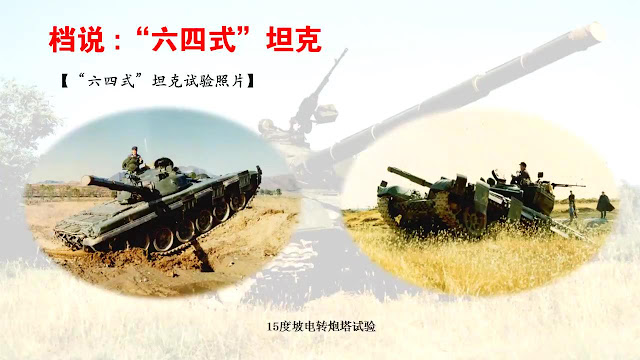Auxiliary Fire Control Instruments
The auxiliary fire control instruments are designed to complement the direct-fire control system in providing the tank crew with a 24-hour capability of delivering effective fire. The instruments are primarily used to obtain and apply range card data for the tank's armament and searchlight. If the tank is used in the artillery role then the instruments are used to apply firing data from the fire direction center. The instruments used in this system consist of a gunner's quadrant or elevation quadrant and an azimuth indicator.
P. S. The US Army had this extra gear installed all the way up to the M60 tanks.
Gunner's Quadrant
This instrument (fig. 1) is OEM on all standard tanks. It is used to measure and apply angles of elevation on those tanks without mounted elevation quadrants. On main battle tanks this quadrant is used primarily to check and adjust the mounted elevation quadrant. In measuring and applying angles, it is possible to interpolate the reading of this quadrant to the nearest one-tenth of a mil. There are two scales on this quadrant: the elevation scale graduated in 10-mil increments, and the micrometer scale graduted in increments of two tenths of a mil. Each scale has an index to designate readings. A level vial is mounted on the index arm. To measure or apply plus angles of elevation, the black line-of-fire arrow must be pointed to the muzzle end of the main gun. Minus angles are measured or applied with the black line-of-fire arrow pointing to the breech end of the gun. To use the quadrant to measure or apply angles of elevation, the quadrant shoes are placed on the seats or scribed marks provided on the breechring of the main gun. The index arm and micrometer knob or the gun controls are manipulated to obtain the proper reading. The quadrant must be checked periodically for accuracy by the end-for-end test. If the correction is greater than 0.4 mil it must be turned in to Ordnance.
Elevation Quadrant
This instrument (fig. 2) is found only on the main battle tanks and is used to measure and apply gun elevation angles. Elevation angles can be measured and applied to the nearest 1 mil. It is mounted on the ballistic drive cross shaft or on the recoil guard of the main gun. The elevation quadrant has two scales: the elevation scale graduated in 100-mil increments and the micrometer scale graduated in 1-mil increments. Black figures indicate plus readings and red figures minus readings. Each scale has an index to designate readings. The quadrant has a level vial and a reflector to aid the gunners when centering the bubble. Elevations are applied or determined by rotation of the micrometer knob and use of the gun controls. The elevation quadrant is checked and adjusted by using the gunner's quadrant.
Elevation Quadrant (fig. 2)
Azimuth Indicatora
The azimuth indicator (fig. 3) is used to lay the gun for direction and to measure horizontal angles. It is mounted so that its gear meshes with the turret ring gear and is located on the right side of the turret where it can be viewed by the gunner. The azimuth indicator has three scales: an azimuth scale graduated in 100-mil increments, a micrometer scale graduated in 1-mil increments, and a gunner's aid scale graduated in 1-mil increments. There are three pointers: an azimuth pointer (middle) and a micrometer pointer (outer), both of which are adjustable, and a directional pointer (inner). The directional pointer indicates the amount of turret traverse measured from the front center of the tank and is nonadjustable. To use the azimuth indicator, the gun is laid on a reference point by use of the direct-fire sights. The resetter knob is pushed down and rotated to move the azimuth and micrometer pointers to zero, then released. Any subsequent turret rotation will be measured by the azimuth and micrometer scales. For small shifts (50 mils or less) in deflection, the gunner's aid is rotated to index the zero of its scale opposite the micrometer pointer; then the turret is traversed in the desired direction until the micrometer pointer indicates the required deflection angle on the gunner's aid.
b. Azimuth indicators must be checked peri-odically for accuracy and slippage. As no error is allowable, inaccurate instruments must be repaired by Ordnance.
The azimuth indicator (fig. 3)
Source: FM 17-12 TANK GUNNERY (1964)





















































